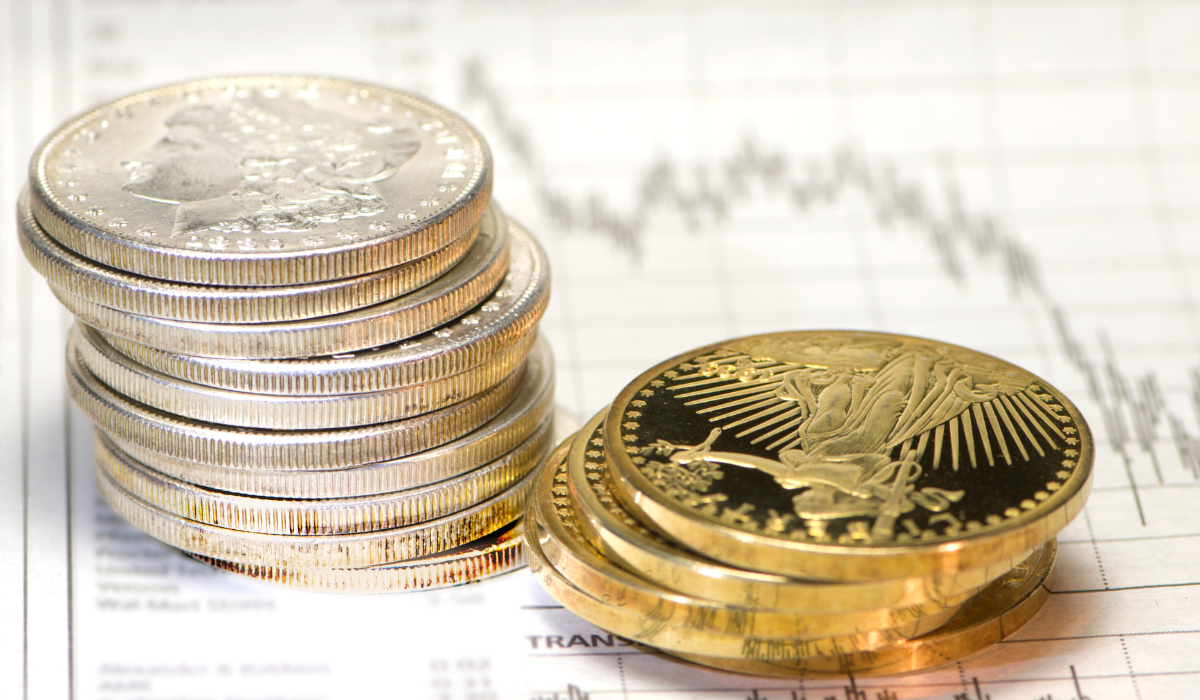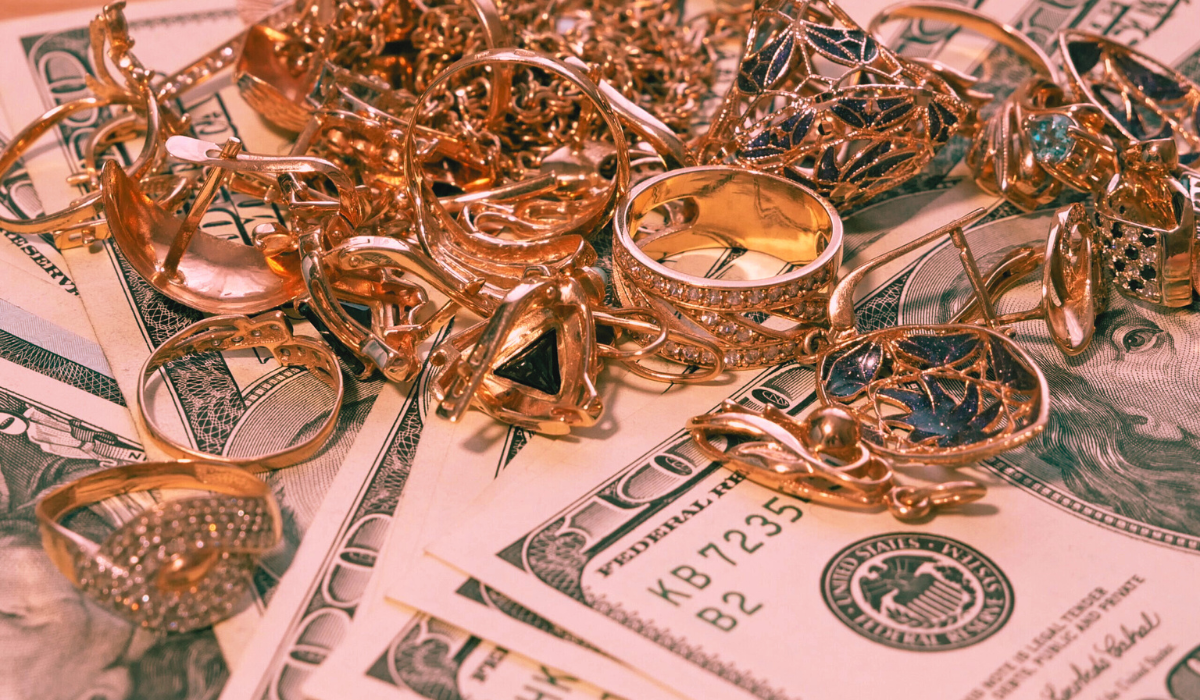Why the Precious Metals Exchange is a Smart Investment for the Long Term
Invest smart with precious metals—stable, secure, and built for the long term.

Let’s talk about wealth—not just making it, but keeping it. When most people think about growing their money, they usually picture things like the stock market, real estate, or maybe even the next hot tech investment.
But one of the oldest, most time-tested investment strategies often gets overlooked: precious metals.
Gold, silver, platinum, and palladium aren’t just shiny rocks—they’re real, tangible assets that have been used to preserve wealth for thousands of years. In fact, they’ve outlasted every government, every paper currency, and every financial trend you can name.
Today, thanks to the precious metals exchange, these assets are more accessible than ever. You don’t need to be royalty or a hedge fund manager.
Everyday people—just like you—can now buy and sell precious metals as part of a long-term financial plan.
Let’s walk through exactly why investing in the precious metals exchange is a smart move for the long term, especially if you’re serious about protecting your financial future.
What is the Precious Metals Exchange?
At its core, the precious metals exchange is simply the marketplace where investors and institutions buy, sell, and trade metals like:
- Gold
- Silver
- Platinum
- Palladium
You can invest in these metals through various channels, including physical bullion, digital platforms, ETFs (exchange-traded funds), mining stocks, and even precious metals IRAs.
Some investors prefer to hold physical metal—bars, coins, or rounds stored in safes or vaults. Others use the exchange to trade digital or paper versions.
Either way, you're tapping into an asset class that's been historically resilient, highly liquid, and globally recognized.
1. Precious Metals Hold Intrinsic Value Over Time
Let’s be honest: most assets you buy today lose value the second you use them. Cars depreciate.
Electronics become outdated. But precious metals are different. They carry intrinsic value—value that isn’t dependent on any government, company, or digital network.
Gold has been used for thousands of years as a symbol of wealth and power. Why? Because it doesn’t rust, corrode, or fade away. It’s rare, beautiful, and useful.
Silver, platinum, and palladium are no different—they have both aesthetic and industrial value.
This intrinsic value is what makes precious metals resilient in the face of market crashes, inflation, or geopolitical chaos. When paper money loses its worth, gold and silver remain strong.
2. Inflation Protection You Can Count On
Inflation is a slow thief. You may not feel it every day, but over time it eats away at your savings.
The cost of groceries, gas, healthcare, and housing keeps climbing. But your paycheck? Not always keeping up.
Precious metals are one of the few investments that consistently hedge against inflation.
When currencies lose purchasing power, gold often gains. That’s why people call it an "inflation-proof" asset.
During the 1970s, when inflation in the U.S. was at historic highs, the price of gold soared.
Even in the past decade, when inflation spiked unexpectedly, precious metals saw renewed interest from savvy investors looking to protect their portfolios.
3. Diversify and Stabilize Your Portfolio
You’ve probably heard the phrase: “Don’t put all your eggs in one basket.” That’s smart advice, especially when investing.
The stock market can be volatile, and real estate values can swing. But precious metals typically move in the opposite direction of riskier investments.
This makes them a powerful diversification tool.
When stocks are crashing, gold often rises. When the dollar weakens, silver tends to hold or gain value.
By adding metals to your portfolio, you reduce overall risk and create more balance across your assets.
In short: precious metals help stabilize your financial future—and that’s something every long-term investor should care about.
4. Tangible Wealth You Can Hold
In our digital age, almost everything is virtual—your bank account, your investments, even your social life.
But there’s something incredibly reassuring about owning real, physical wealth.
Gold bars. Silver coins. Platinum rounds. These aren’t just shiny items—they’re tangible assets that don’t rely on Wi-Fi, passwords, or online accounts.
You can store them in a home safe or professional vault. You can hold them in your hand.
And during uncertain times—economic downturns, political instability, or global crises—this tangibility gives people peace of mind that no paper asset can provide.
5. Limited Supply + Rising Demand = Price Support
One of the most compelling reasons to invest in precious metals is the basic law of supply and demand.
These metals are not renewable. They’re mined from the earth, and it’s getting harder and more expensive to extract them.
As supply becomes more limited—and demand continues to grow—prices are naturally pushed higher.
Gold and silver are widely used in jewelry, electronics, solar panels, and even medicine.
Platinum and palladium are crucial in automobile manufacturing and clean energy.
As industries evolve, the industrial demand for metals is expected to grow—putting upward pressure on long-term prices.
6. Resilience During Economic and Political Turmoil
Let’s face it—the world is unpredictable. Recessions, trade wars, pandemics, currency collapses—these aren’t sci-fi scenarios, they’re part of recent history.
When instability hits, people rush to safe-haven assets.
And nothing says safety like gold. That’s why central banks around the world still keep large reserves of it.
In fact, in times of crisis, the demand for precious metals often skyrockets. People trust them to retain value when other investments crumble.
That makes them an essential component of any long-term, defensive investment strategy.
7. Liquidity and Global Recognition
Here’s the beauty of precious metals—they’re universally valued. Whether you’re in New York, Mumbai, London, or Dubai, gold is gold. Silver is silver.
This universal recognition makes them extremely liquid.
That means you can sell your holdings almost anytime, anywhere, without waiting weeks for a buyer or dealing with complicated paperwork.
That kind of flexibility is crucial for long-term investors who may one day need access to cash or want to rebalance their portfolio quickly.
8. Easy to Start and Scale at Your Own Pace
Unlike buying a house or starting a business, investing in precious metals doesn’t require a huge upfront commitment. You can start small—with a few silver coins or a gold gram bar—and build from there.
Over time, you can grow your holdings at a pace that matches your income and goals.
And thanks to modern exchanges and online platforms, buying gold or silver is as easy as ordering a pair of shoes.
The precious metals exchange lets you buy fractional shares, physical metals, or even set up automatic monthly contributions. It’s flexible, scalable, and accessible for all types of investors.
9. Precious Metal IRAs for Retirement
Did you know you can even include gold and silver in your retirement account? It’s called a Precious Metals IRA, and it allows you to hold IRS-approved bullion as part of your tax-advantaged retirement savings.
This is a game-changer for long-term planning. You get the same tax benefits as a traditional IRA, but with the added security of tangible, non-paper assets.
For people worried about market volatility during their retirement years, precious metal IRAs offer a sense of security that traditional 401(k)s or stocks may not.
10. Long-Term Wealth and Legacy Planning
Gold and silver aren’t just for your benefit—they’re an amazing tool for generational wealth. These assets don’t rot, rust, or expire.
They’re durable, portable, and universally valuable.
That makes them perfect for passing on to children, grandchildren, or charitable foundations.
Unlike digital investments, which can be lost with a forgotten password or erased in a cyberattack, physical metals are easy to transfer and hold their value over decades—even centuries.
For people thinking about legacy and estate planning, metals are a trusted way to protect family wealth for generations.
How to Get Started with the Precious Metals Exchange
Getting started is simple. Here are a few key steps:
- Set your goals – Are you hedging against inflation? Saving for retirement? Planning for legacy?
- Choose your metal – Gold for stability, silver for affordability and industrial use, platinum and palladium for growth potential.
- Pick your format – Physical bullion, ETFs, or Precious Metal IRAs.
- Find a reputable dealer or exchange – Look for insured, licensed providers with positive reviews.
- Store safely – Use home safes, safety deposit boxes, or secure vaults offered by dealers.
- Stay consistent – Consider monthly purchases to average out market fluctuations over time.
Final Thoughts: Precious Metals Are Built for the Long Game
The precious metals exchange isn’t about chasing quick returns—it’s about preserving value, protecting wealth, and building financial resilience.
In a world full of uncertainty, few assets offer the clarity, strength, and dependability of gold, silver, and their precious metal cousins.
Whether you're just getting started or looking to expand your long-term strategy, precious metals are a smart, time-tested move.
Ready to explore your options? Reach out today to Perfect Piece Atlanta for precious metals dealers and take the first step toward a more secure financial future.
FAQ's –
Is gold still a good investment in 2025?
Yes! With global uncertainty, inflation pressures, and a desire for real assets, gold remains one of the safest and most reliable investments in 2025—and beyond.
Which is better—gold or silver?
Gold is more stable, while silver is more affordable and has greater industrial demand. A combination of both is often ideal for balance and long-term growth.
Can I invest in precious metals through my IRA?
Absolutely. Precious Metal IRAs let you hold physical bullion inside a retirement account, with all the usual tax benefits. It’s a smart move for diversifying your retirement strategy.
Is it safe to store gold at home?
It can be, with the right safe and security measures. However, many investors prefer secure, insured vaults provided by precious metal dealers or storage companies.
How much of my portfolio should be in metals?
Most financial advisors recommend allocating 5–15% of your investment portfolio to precious metals, depending on your risk tolerance and financial goals.












